Books of Tribeca: Tribeca | Four Decades in Pictures
Longtime Tribecan Carl Glassman, who with his wife, April Koral, moved here in 1979 and founded the Tribeca Trib in 1994, has published a book of historic pictures of the neighborhood over — as the title says — the past four decades. He culled through thousands and thousands of digital images and negatives, selecting 160 that run in chronological order staring in 1980, long before he started publishing.
The book is an amazing look back on the streets and people of the neighborhood, as well as the seismic events that took place here in the past years. (Order it direct from Carl’s website.) Plus it was printed locally on Varick by The Thomas Group. Read the history of the Trib, founded in 1984, here, and read on to see what inspired this book.
What made you shoot these photos early on? What were you looking for?
At one point I was applying for a fellowship and I saw this neighborhood and thought, it’s not going to stay like this forever. And I wanted to document what it looked like. At that point I didn’t know some streets would be landmarked. Then I got into taking pictures in Soho and changed my focus.
How did you know so much of this would change?
I just figured it had to. It’s New York City yet it was so desolate. How could any part of Manhattan remain that way? I thought the same with the piers — I wish had done more.”
What brought you here?
The first time I saw the neighborhood I was on jury duty and I couldn’t believe how desolate it was. It was so dead. I had never seen anything like it. But then Independence Plaza was built as middle income housing and we just squeaked by making the minimum requirement for income.
Why did you want to make a book?
Partly because Tribeca Trib turned 30 in September. It was an anniversary year, and I thought it would be a shame not to put some of these pictures together in one volume. Most of them had been published in the newspaper but I wanted them to be published in a size that does them justice.
It was a project of self discovery too — I relived those stories and those people. It’s been a lot of years and it was a way to recover some of that — the people who are no longer here, the businesses that are no longer here. It was cool. Socrates [the diner that was in what is now Tamarind] for example was a place that had a lot of regulars and that meant something to a lot of people. It was a good way to remember that place.
There’s just so much change.
There’s one other thing. The idea of “community” is a really complex thing. Even a small neighborhood like this has so many ideas of community. People go to the ballfields and think that is community. But the textile wholesalers were a community too. That’s something I wanted to get across — how complex Tribeca is.
Do you have a favorite picture?
Sometimes a favorite picture is the hardest to get. But my criterion for the book was strong photos — the strength of the picture over the event. Though there were important historic moments like the last textile wholesaler on Walker Street. I do also want to say that it is especially meaningful to me to include several photos from my two-year documentation of the building of Pier 26. It was such a privilege to be able to witness, close up, the construction of a part of Hudson River Park that today is enjoyed by so many people, and to put a face to at least some of the skilled, hard-working men who made that pier possible.
Has Tribeca been a good muse?
It really seemed like a small town in a big city — a town that could have its own newspaper at a time when people still read newspapers. But my whole approach with the Trib was more like a Life magazine of community newspapers. I wanted it to be strong photographic publication. I was always more interested in the photography than the news. I wanted no stories [just a big image] on the front page and a centerfold for features, and a lot were on local artists. There were so many artists in this neighborhood who never got written about anywhere because it’s such a big city. There were so many good artists. That was really rewarding to me.







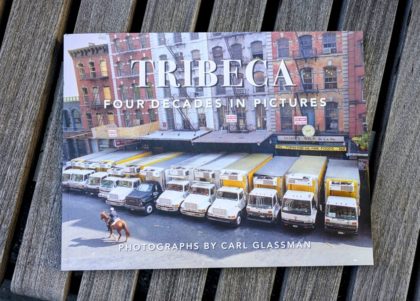
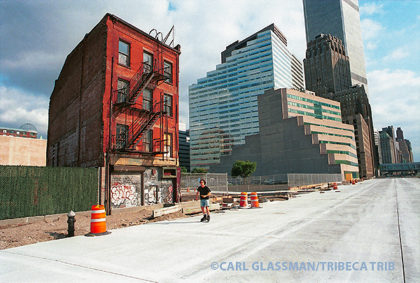
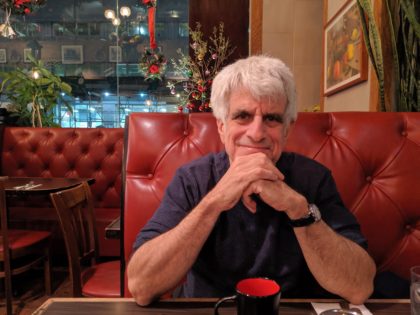
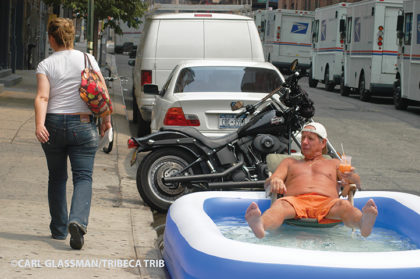
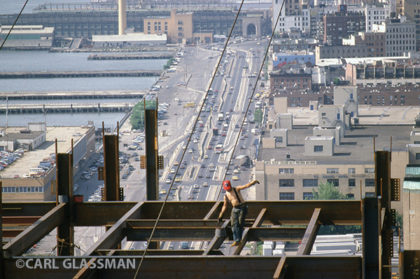
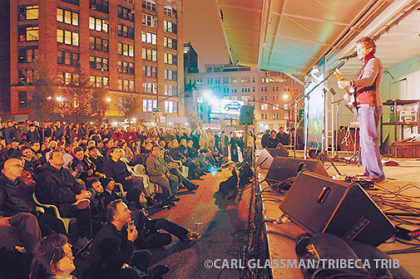
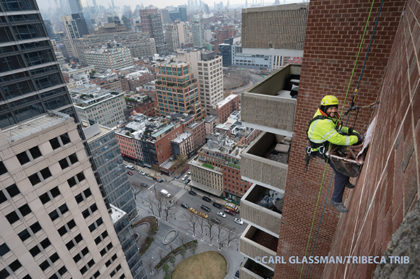







Carl is the best . . . just ordered the book!
A neighborhood gem, nice guy and great photographer.
I’m hoping there is a wonderful photo of Carl and April in the book too — because they ARE Tribeca. They will be remembered forever as the authentic memory-keepers of that period, the documentarians of our beloved turf. Thank you Carl and April.
I just ordered this book and I can’t wait to see his pictures in color and a non digital format. Documents a great piece of history, I wish I had been part of (everyone seems so much more relaxed). It’s so hard to imagine what it was vs. what it has become. Congratulations (and thank you) Carl!
Good to know you are out and about and, as a fellow photographer, have always enjoyed your take on our nabe. We’ve been here since ’85 and also witnessed the remarkable transformation. We are still so grateful that it became landmarked just as we arrived.
Carl and April, you are two of Tribeca’s most precious jewels. Thank you for all you do for us and for compiling this wonderful book of memories. Congratulations!
Just ordered mine, looking forward!